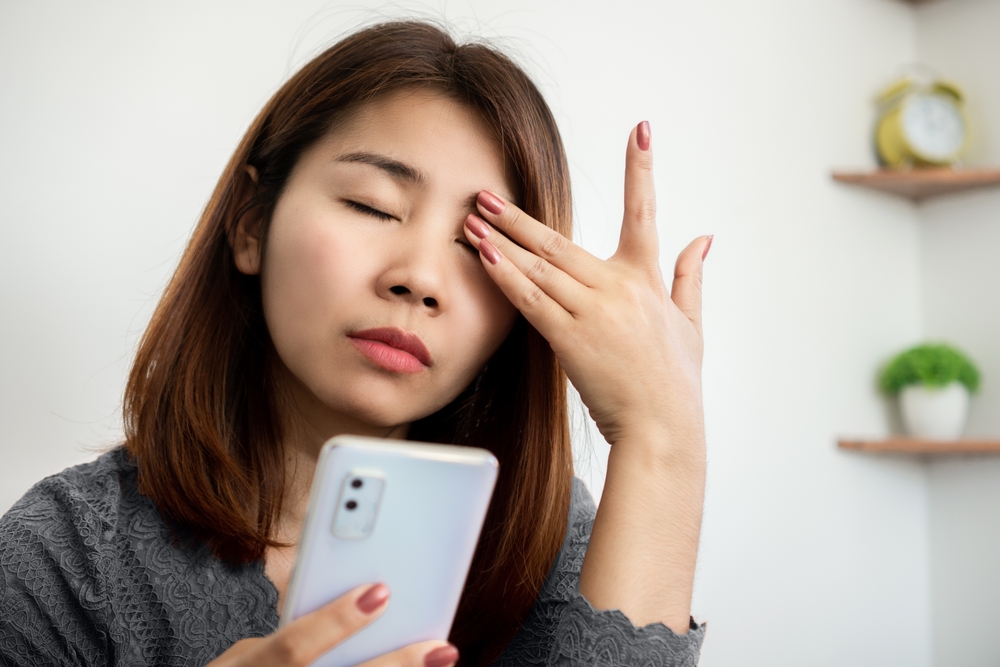

Dry eye disease is a common condition that affects millions of people, causing discomfort, redness, and blurry vision. But what many people don’t realize is that certain everyday habits could be making their symptoms worse. Understanding these habits and addressing the underlying causes can make a big difference in how your eyes feel day to day.
Excessive Screen Time
Spending hours on computers, phones, or tablets reduces how often you blink. Fewer blinks mean less lubrication, leading to dryness and irritation. Try following the 20-20-20 rule - every 20 minutes, look at something 20 feet away for at least 20 seconds - to help your eyes rehydrate naturally.
Not Staying Hydrated
Your body needs plenty of water to produce healthy tears. When you’re dehydrated, tear production drops and the eyes dry out. Make it a goal to drink enough water throughout the day - especially if you spend long hours indoors or in air-conditioned environments.
Sleeping in Contact Lenses
Even if your lenses are approved for extended wear, it’s best to remove them before bed. Sleeping in contact lenses reduces oxygen flow to the eyes and increases the risk of dryness and irritation.
Overusing Eye Drops
While artificial tears can provide quick relief, overusing them can actually worsen dryness over time. Your optometrist can recommend preservative-free options or more advanced treatments for long-term comfort.
Targeting Dry Eye at the Source
Many cases of chronic dry eye are linked to Meibomian Gland Dysfunction (MGD) - a condition where the oil glands in your eyelids become blocked. These glands produce the oil layer of your tears, which prevents them from evaporating too quickly. When the glands don’t function properly, your tears evaporate faster, leading to dryness, irritation, and inflammation.
At Quick Vision, we focus on identifying and treating the root cause of dry eye rather than just masking symptoms. Through a comprehensive evaluation, we can determine whether MGD or other factors are contributing to your discomfort. If you’ve been relying on over-the-counter drops with little relief, it might be time to explore advanced options.
Intense Pulsed Light (IPL) Therapy
IPL therapy uses controlled pulses of light applied to the skin around the eyelids to reduce inflammation and unclog the meibomian glands. By gently heating and clearing these glands, IPL helps restore the natural oil layer of your tears, preventing them from evaporating too quickly. This treatment also reduces the presence of harmful bacteria and mites on the eyelid margins, which can further contribute to irritation. Patients often notice improved comfort, reduced redness, and longer-lasting tear film stability after a short series of treatments.
Radiofrequency (RF) Therapy
RF therapy uses gentle, therapeutic heat and energy waves to penetrate the deeper layers of the eyelids, loosening hardened oils and stimulating collagen production. This not only improves gland function and tear quality but also enhances the health and elasticity of the surrounding eyelid tissue. Many patients appreciate that RF is comfortable and quick, and it also provides cosmetic benefits such as reducing puffiness under the eyes and tightening the surrounding skin, all while helping to treat their dry eye symptoms.
Restore Comfort and Clarity to Your Eyes at Quick Vision
Dry eye symptoms can often be improved by making simple lifestyle changes and addressing the true source of the problem. Whether your symptoms stem from MGD, digital strain, or other factors, professional care can make all the difference.
If you’re experiencing dry eye symptoms, schedule a consultation at Quick Vision to explore advanced treatments like IPL and RF therapy for lasting relief. Visit our office in Vincennes, Indiana, or call (812) 255-0559 to book an appointment today.











